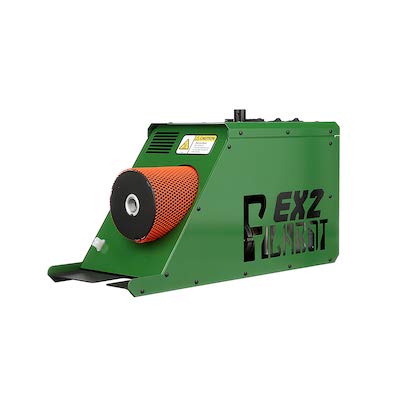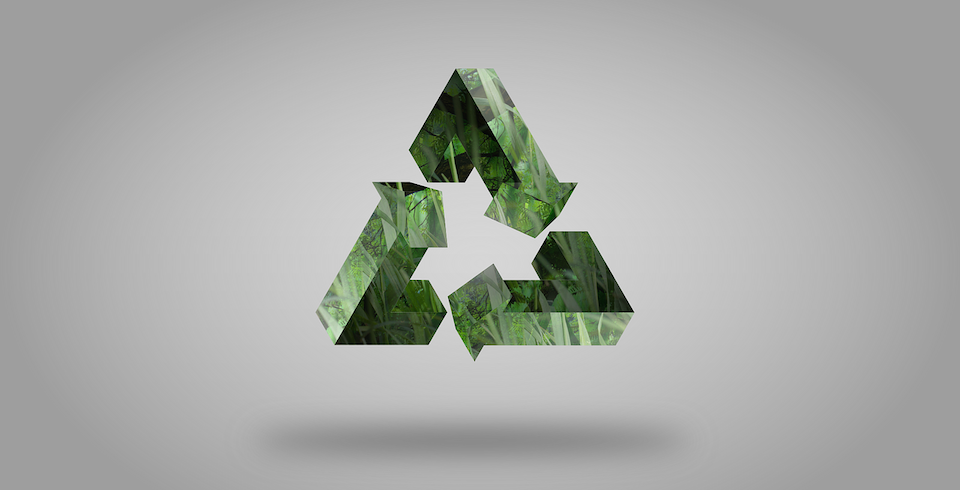How to Recycle 3D Filaments and Prints
We all love our nifty 3D printer and the creative prints that we make out of them, but we have to admit that there is a major environmental consequence to the surge in popularity of 3D printing – it generates a lot of solid plastic waste. Petroleum-derived plastics, such as the massively popular ABS, can take up to millions of years to naturally breakdown. Even then, these plastics can release toxic compounds that can be dangerous to organisms near it.
In this article, we take a look at one of the novel solutions to this problem – filament recyclers. Read on if you would like to know how they work, what they can do, and where you could get one.
What are Filament Recyclers?
Filament recyclers are designed to take your scrap 3D printing materials – including discarded filaments, misprints, random globs of plastic – and make repurposed filament out of them. Some models can even take and recycle plastic that are not necessarily associated with 3D printing, such as empty water bottles.
Take note that not all plastics lend themselves well to the recycling process. 3D filaments and prints are especially suited to it because of their thermoplastic nature. With an application of high temperature and a little pressure, the thermoplastic material of 3D prints can be remolded into different shapes. Filament recyclers use this concept to make new filaments out of scrap material, which can then be fed again into your 3D printer.
How do Filament Recyclers work?
Most filament recyclers operate using a three-step process. First, the materials to be recycled have to be ground into smaller and easily digestible pieces. Most filament recyclers come with a set of grinders made with metal which are quite similar to those found in industrial-grade plastic recyclers. This grinding process produces small chunks of plastic that are only a few millimeters in size and lend themselves well to the melting process.
The parameters of the melting process may differ according to the plastic being recycled or the particular filament recycler that you are using. However, the concept remains the same. The plastic chunks are subjected to high temperatures, making them fluid enough to be fed into the extruder.
The extruder of a filament recycler does not differ much from the extruder of your 3D printer, except it produces filament instead of using it. The melted plastic is fed into the extruder which controls the diameter of the filament that is produced. Most filament recyclers provide the option of using different sizes of extruders, which include the standard 1.75mm and 2.85mm diameter sizes, and more unusual ones such as 1mm up to 4.5 mm.
Most manufacturers of filament recyclers recognize the importance of consistency in diameter of a 3D printing filament, so most filament recycler models integrate a diameter feedback system into the extrusion system. If you encounter problems with the diameter of the extruded filament, a few quick adjustments to the extrusion speed should do the trick to get you good and consistent results.
Lastly, most filament recyclers come integrated with a spooling system for the produced filament. If you have ever tried printing with a spool that is either too loosely or too tightly wound around its spool, then you know how important a consistent and sufficiently tight spool is to a hassle-free 3D printing experience. It is good to know that manufacturers of filament recyclers have thought this far ahead in the process and designed their products to produce the best quality recycled filaments.
Where can I buy a Filament Recycler?

There is one brand of filament recycler that stands above all the rest in terms of popularity and availability: Filabot. They have been in the filament recycler game for a long time and have seemingly improved and refined their technology to a point that is not yet equaled by any other filament recycler manufacturer.
The Filabot filament recycling system can be purchased on a per component basis. The heart of the system is no doubt the extruder, which are available in either the EX2 or the more recent EX6 models. The Filabot extruders are highly compact but have all the essential features you will need to recycle a wide range of polymer materials including PLA, ABS, HIPS, and PEEK. The extruder system produces a high quality filament with a tight tolerance level and fast extrusion speeds.
The Filabot extruder can be augmented with additional components for a more high quality product. A worthwhile addition is the Filabot Airpath, which provides a steady stream of ambient air to cool the filament as it being extruded, resulting in a more consistent diameter and an overall stronger product. The Filabot Spooler can also be purchased separately and provides a consistent wounding of your recycled filament along a spool. Both these additional components result in the recycling processing being much faster and produces a recycled filament of a higher and more consistent quality.
You do not have to restrict yourself to the Filabot brand if you are in the market for a filament recycler. Wellzoom also manufactures its own line of desktop filament extruders which are designed to be extremely user-friendly. It can accommodate most of the common 3D printing materials such as ABS and PLA, and may even process PET bottles and other plastics as long as they already been pre-crushed.
Similar to FIlabot, Wellzoom also sells its own version of an Auto Winder as an additional component to the extruder. The spooler interfaces well with the extruder, resulting in a tightly wound spool that is ready to go for your 3D printing needs as soon as you are done recycling.
Buying recycled filaments
If you do not want to bother with recycling your own filaments and are not interested in buying your own filament recycling system, then buying and recycling filaments is an equally environment-friendly option.
A good option for buying recycled filament is provided by Filamentive. Their recycled PLA filament is available in 1.75 mm diameter and in 1 kg spools. The Filamentive rPLA filament retains most of the benefits of virgin PLA, including ease of use and a low tendency to warp and shrink. Despite being made from 90% waste material, Filamentive claims that the rPLA filament is actually tougher and less brittle than virgin PLA.
If you are looking for a recycled ABS filament, then look no further than the Recycled ABS Filament developed by the collaboration of KickFly and Dimension Polymers. Made from 95% recycled ABS plastic, this filament delivers a more environment friendly solution to your ABS plastic needs without sacrificing quality. The Recycled ABS filament is available in 1.75mm diameter and in 750g spools.
The rPETG filament sold by 3DFUEL is composed of 100% recycled PETG but retains the exceptional optical properties of virgin PETG. As with original PETG, the rPETG filament combines the ease of use of PLA and the high temperature resistance of ABS on top of having excellent light transmission characteristics.
As you can see, not only are there numerous options for recycled filament products, but the options are also quite diverse in terms of materials. As the industry as a whole makes a shift towards being more environment friendly, we can only expect that the selection of recycled filaments in the market will continue to expand and diversify.
Are recycled filaments as good as brand new filaments?
A common concern when making or buying recycled filaments is whether you can expect the same quality with them as you can get with brand new filaments. Most commercially available recycled filaments claim to have no drop in quality compared to their virgin counterparts, but this is probably because they are produced in a more controlled manner using industrial quality recyclers. Making your own recycled filaments can be a little more tricky.
The first hurdle when making your own recycled filament is making sure that you produce a filament that is consistent in diameter and quality. Obviously, your filament recycling system plays a big role in this department. A filament with inconsistent diameter will result in a 3D print riddled with issues due to inconsistent extrusion. At worst, an inconsistent filament can seriously damage your 3D printer extrusion system by causing unexpected clogs and jams.
In terms of overall strength, tests have shown recycled filaments exhibit an overall decrease in tensile and shear strength compared to their virgin counterparts. Repeated recycling tends to magnify this decrease in quality, resulting in filaments that are progressively more brittle and frailer. Mixing recycled material of different colors is also much like mixing paint of different colors, in that you end up with a color resembling dark green to brown. Your print will not win any awards in the aesthetics or durability departments, but you at least have the peace of mind that you are not generating any more solid waste than necessary.
The final word
The amount of solid, non-biodegradable waste produce d by 3D printing has long been the bane of the industry and a cause of concern for most users whether they do 3D printing as a hobby or commercially. With all the trials and failed attempts involved in coming up with perfect 3D prints, there is definitely a large amount of unnecessary waste that the industry needs to cull down. The development of recycled filaments and the move towards more environment friendly solutions is a great move towards a more sustainable and socially acceptable practice.
Right now, buying your own filament recycling system can be extremely costly, especially if you are only doing 3D printing as a hobby. A cheaper option, if you are intent in going for a greener alternative, is buying recycled filaments from reputable 3D filament manufacturers. These are manufactured under controlled conditions, so they mostly retain the properties of the virgin material.
It is true that the recycling process eventually leads to degradation of the material in terms of quality, but it is our hope that progressively improving technology eliminates this limitation in the near future. As filament recycling technology improves, we also hope that it becomes more affordable so that more users can do it. The movement for solid waste reduction has grown globally, and the 3D printing industry will do well to follow suit. After all, we all have to do our part for the greater good.


